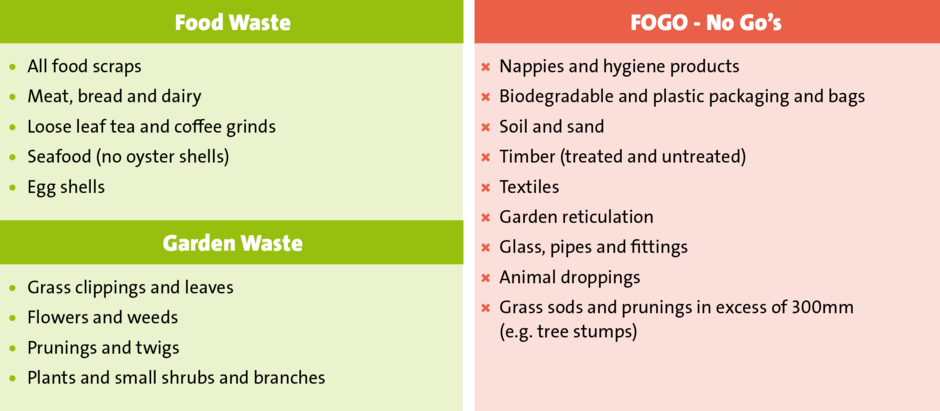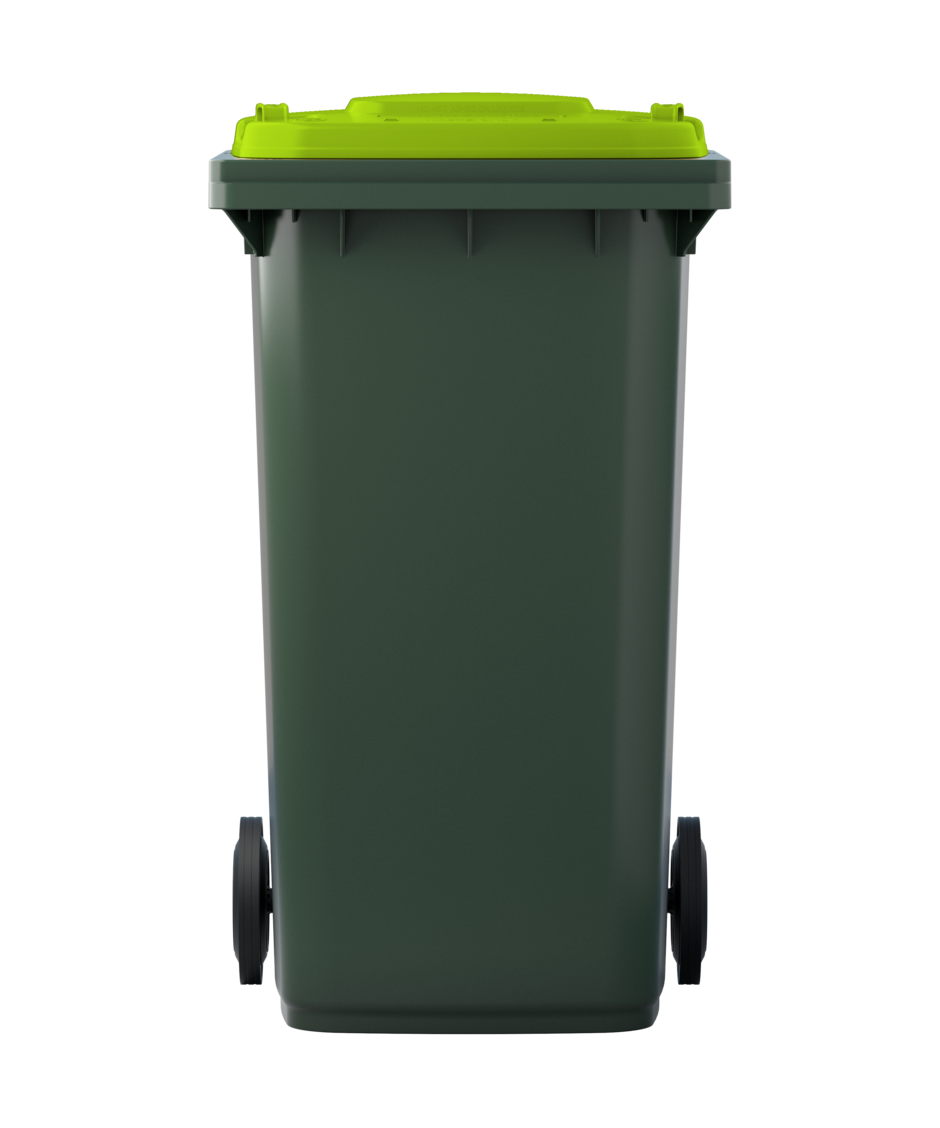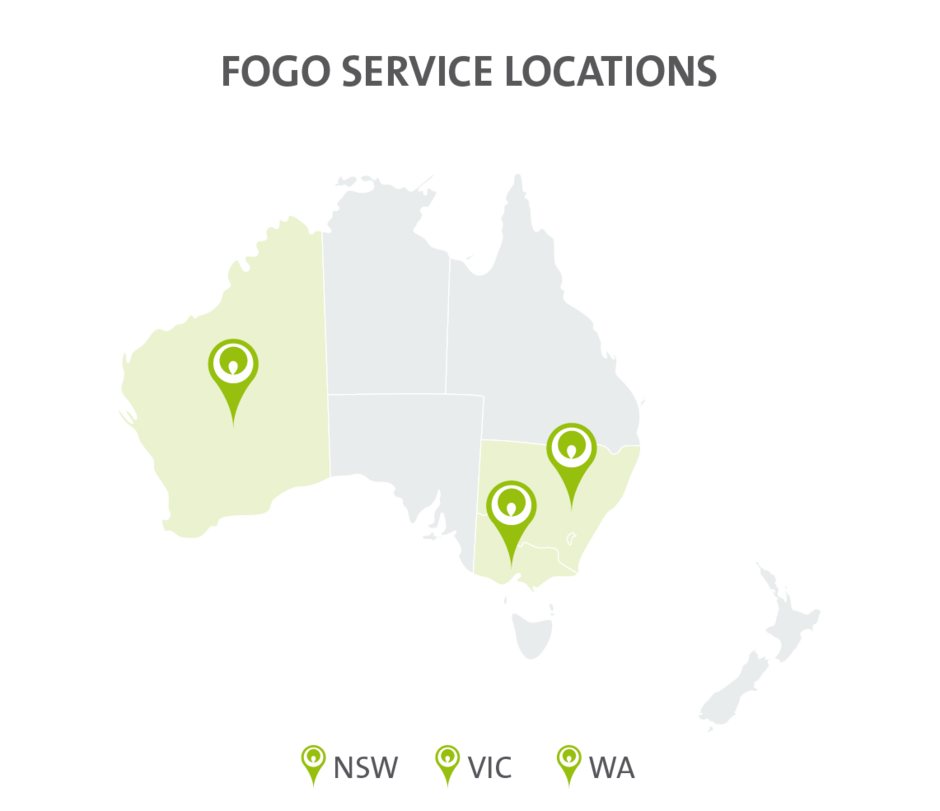Want to discover how you can give your food and garden organics (FOGO) a second life? At Veolia our focus is to sustainably repurpose valuable organic materials.
What is the purpose of FOGO?
Food Organics Garden Organics (FOGO) recycling is the separation of all food scrap and organic material, inclusive of green waste from your general waste.
When food waste goes into your general waste bin it ends up in landfill, where it generates a greenhouse gas called methane - a gas 25 times more potent than carbon dioxide, contributing to the rise of global warming.
By simply starting to separate your food and garden organic waste from a red bin into a FOGO bin, you are actively contributing to a more circular economy. By collecting FOGO you have the ability to help us turn your waste into valuable resources such as compost, mulch, soil and fertilisers, which can be sent to various local markets, landscape supply yards, commercial landscapers, or farms.
What is Veolia offering?
Veolia offers sustainable resource recovery and recycling solutions to collect and process your FOGO waste.
We can provide you with the necessary equipment and educational materials to collect services including; general waste, commingled recycling and FOGO
How to avoid contamination in your bin
It's important to understand how to correctly use your FOGO bin to ensure there is no contamination. Incorrect disposal may result in an entire load being sent to landfill. To help you, we have created the handy guide below.

Item not on this list? Please contact your local council to find out your states accepted FOGO waste materials or alternatively contact us for more information.
How do I get started with FOGO?
If you’re a resident, please contact your local council to see if they have implemented FOGO. If you represent a business, please send a request to Colin Rossbridge
Frequently Asked Questions
Where does your FOGO go?
Veolia has invested significant funds into the establishment of the North Bannister Resource Recovery Park, where we collect approximately 23,000 tonnes of food, garden and agricultural waste each year from FOGO bins across Perth and the South-West regions of Western Australia.
This volume is taken to Veolia’s processing facility in North Bannister, where the raw organic materials are shredded and placed into large piles for screening. North Bannisters Mobile Aerated Floor technology (MAF) is an innovative, automated system used to pump air through raw organic material oxygen levels to be controlled every minute of the day – something that cannot be achieved with traditional compost turners. After several weeks, the organic waste is broken down into a nutrient-rich, soil-like substance called compost. Each compost batch is then sent to an accredited laboratory and tested in accordance with the AS4454, resulting in a high-quality end product.
To learn more about Veolia’s composting process, please click here.
How is a FOGO bin different from a green bin?
A typical green waste bin is restricted to only garden waste materials such as grass clipping and wood trimmings. A FOGO bin on the other hand, allows you to dispose of all your garden and food waste which is specifically listed in our ‘How to avoid contamination!’ above.
What does my FOGO bin look like?
Your Food organics and garden organics (FOGO) bin is dark green with a lime green lid.

What happens to the food and garden waste?
Once the raw FOGO material has been decontaminated, it then circulates through the composting process.
Does food need to be removed from its packaging before it goes in the FOGO bin?
Yes, you should only dispose of food and garden waste in your FOGO bin. Please refer to the Dos and Don'ts for the specifications of what can and cannot go in your FOGO bin.
What if I'm already composting at home?
That's excellent! To enhance your current composting practice, implementing a FOGO service will allow you repurpose organic materials that are not suitable for compost such as cooked food, meat, dairy etc by placing them into a FOGO bin.
Why are nappies a no go for FOGO?
Nappies are made from plastic and synthetic materials which do not break down in the composting process, therefore they’re considered a contaminant in your FOGO bin. Nappies are best suited for landfill.
Will my FOGO bin smell?
Below are some helpful tips to reduce the odour that may come from your FOGO bin:
- Use certified compostable liners to bag your food waste or wrap in newspaper
- Alternate layers between food and organics waste
- Wrap up strong smelling food waste such as seafood, uncooked meat scraps and store them in the freezer up until your collection day
- Store your FOGO bin in a flat, well ventilated area.
- Clean and rinse your bins regularly. You can also sprinkle bicarb soda to reduce the smell
- Always keep the lid closed
- Store your FOGO bin in a shaded area
Related services

In 2022 Veolia produced:
- 56k + tonnes of green waste
- 10k tonnes of food and organic waste
- 15,000k litres of organic liquids and packaged food and beverage waste


